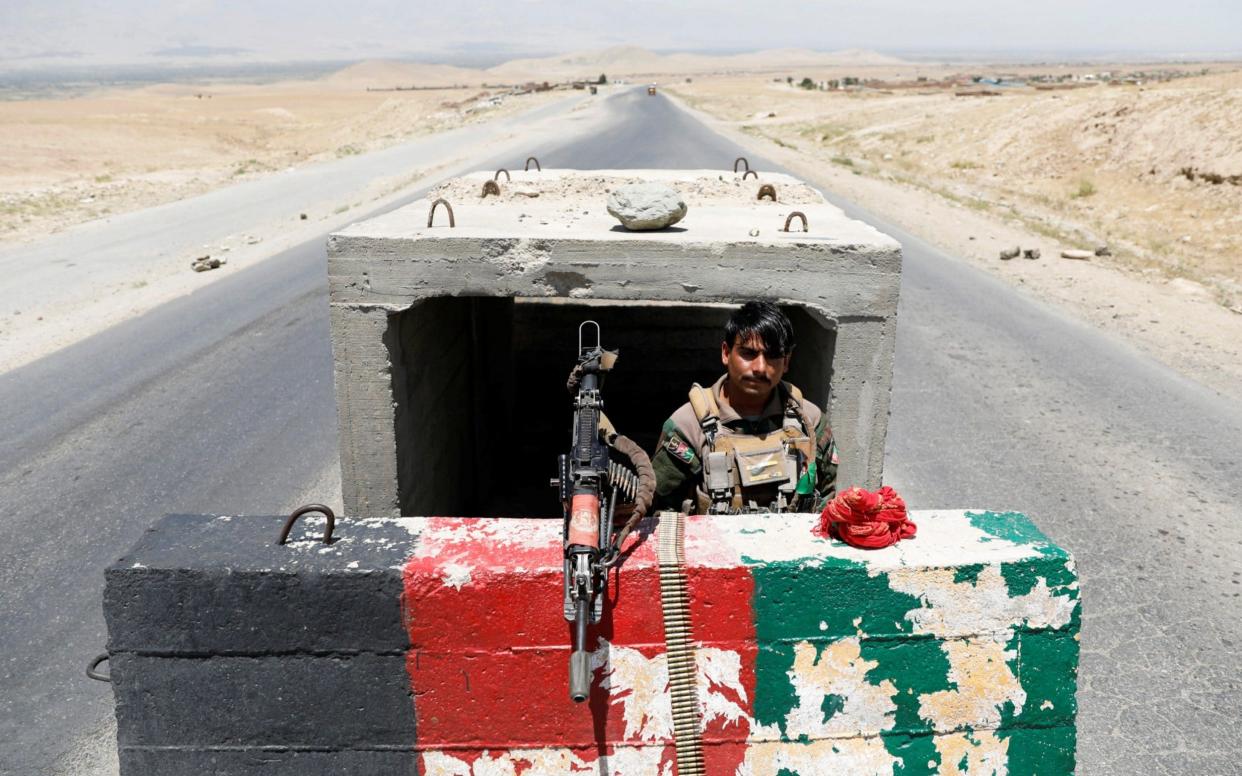Hundreds of Afghan troops flee across border to escape Taliban offensive

- Oops!Something went wrong.Please try again later.
Hundreds of Afghan troops fled into neighbouring Tajikistan as the Taliban's march through northern Afghanistan gained momentum with the fall of 10 districts in Badakhshan province.
The militants on Sunday night appeared poised to move on the provincial capital, as well as the centre of neighbouring Takhar province, after demoralised and poorly equipped Afghan troops either surrendered or retreated.
More than 300 Afghan military personnel crossed the border to escape the advance, Tajikistan's State Committee for National Security said.
Others fled to Badakhshan's capital of Faizabad, where unconfirmed video footage shared on social media appeared to show crowds of people thronging a commercial plane leaving the city.
The loss of districts which were once a bastion of the Northern Alliance who fought the Taliban in the late 1990s is the latest reverse for an Afghan government which has appeared in disarray as American troops withdraw.
Government and anti-Taliban leaders were on Sunday night holding emergency talks after the inroads into one of the last regions then to hold out against the Taliban's regime. The area has remained a rich recruiting ground for the Afghan army.
"Unfortunately, the majority of the districts were left to the Taliban without any fight," Mohib-ul Rahman, a provincial council member, told AP. In the last three days, 10 districts fell to the Taliban, eight without a fight, he said.
The United Nations on Saturday told other aid agencies that it would start drawing down staff from Faizabad.
Dozens of rural districts have fallen since Joe Biden began the closing stages of America's withdrawal from Afghanistan, leaving the Taliban to capture large amounts of arms and equipment.
All major towns and cities remain under government control, but the speed of the collapse has alarmed Washington and its Nato allies, who fear it will become an unstoppable cascade of Taliban victories.
Afghan officials say they have conducted temporary retreats from some districts and intend to retake them later.
Badakhshan was the home province of former President Burhanuddin Rabbani, who was killed by a suicide bomber in 2011. The former president also led Afghanistan's Jamiat-e-Islami, which was the party of famed anti-Taliban fighter Ahmad Shah Massoud, killed by a suicide bomber two days before the 9/11 attacks in America.
His son, Salahuddin Rabbani, now part of the current High Council for National Reconciliation, in a May interview told the Telegraph that America had undermined Afghanistan by cutting a deal with the Taliban and not including the government. He said the Taliban appeared to have no intention of negotiating with the government.
He said at the time: “The Americans are leaving. We cannot do much about it. Was it responsible or not? I think we can see the situation, the circumstances. At what time are they withdrawing? At a time when negotiations are going nowhere.”
The Taliban on Sunday also took the district of Panjwayi in Kandahar, where government forces have been under siege in the district centre for weeks.
The Pentagon has said it will continue to give funding and advice to the Afghan forces once US troops leave, as well as fix its small fleet of planes and helicopters. But the swift Taliban advances have led US intelligence assessments to cut the government's chances of survival, with analysts now predicting the government could fall within six to 12 months.

